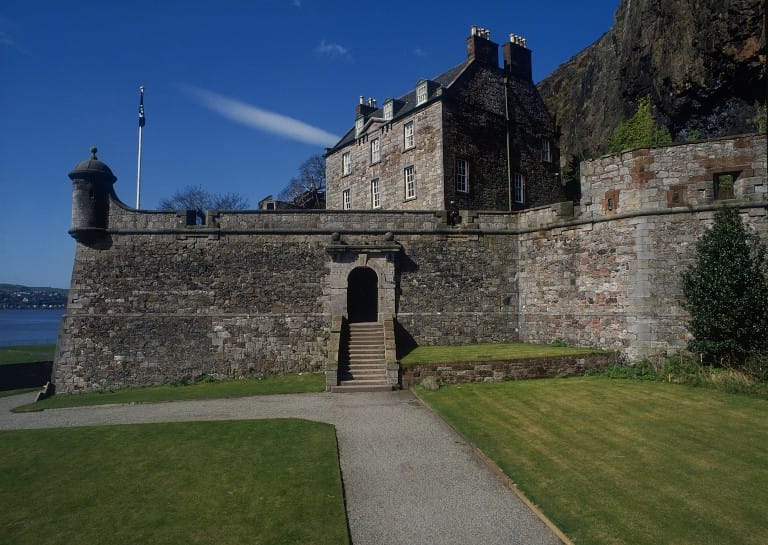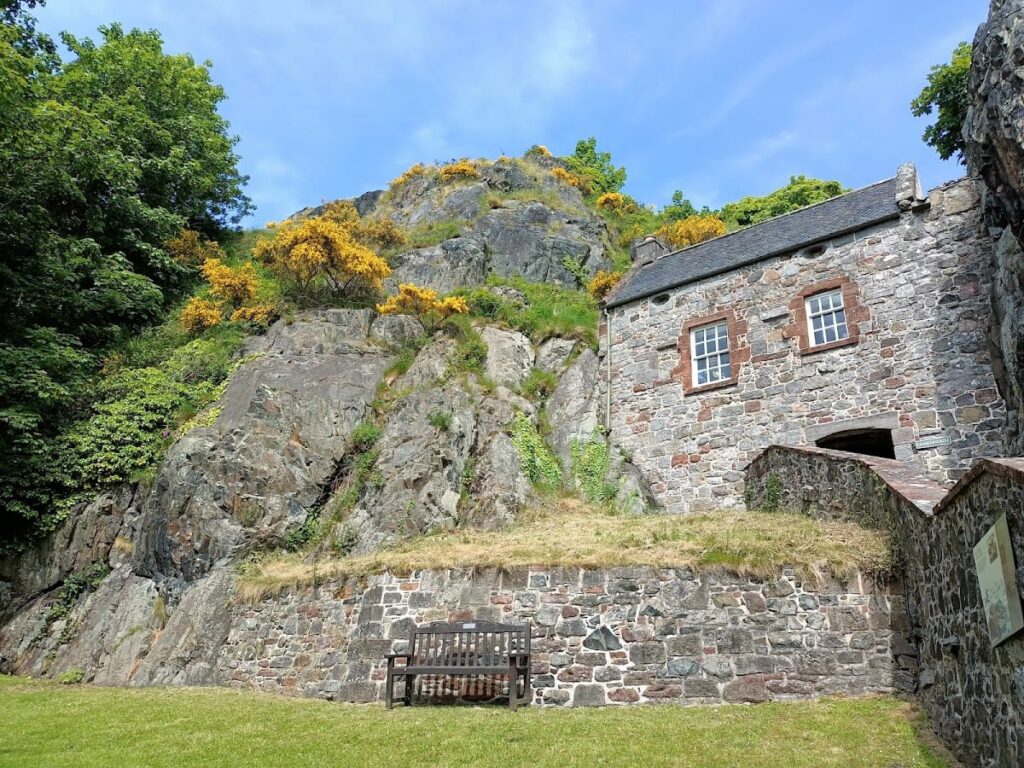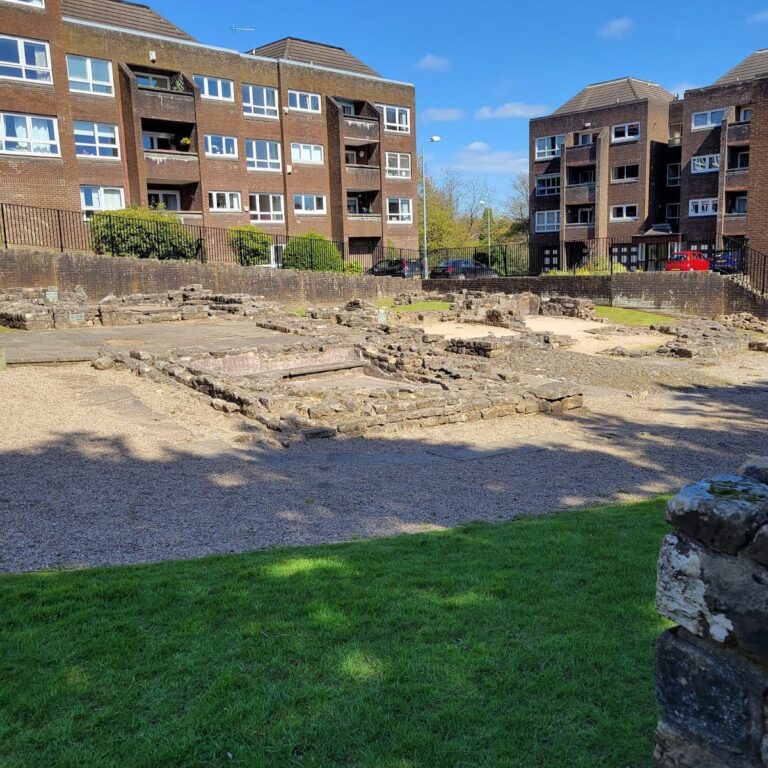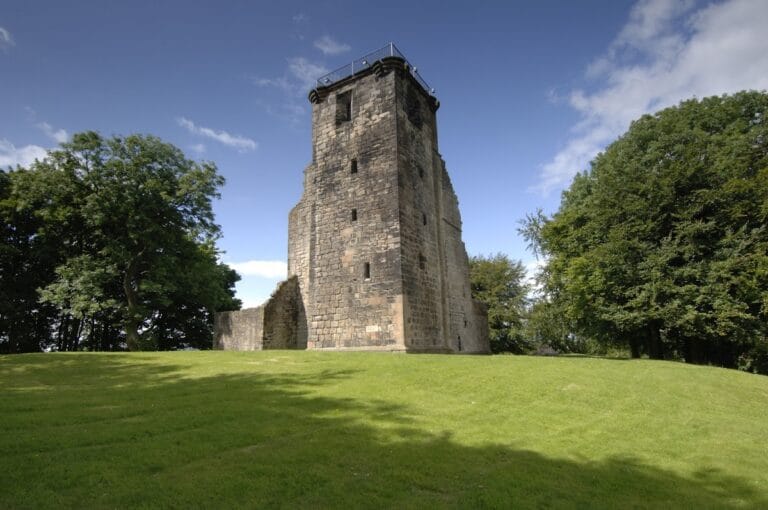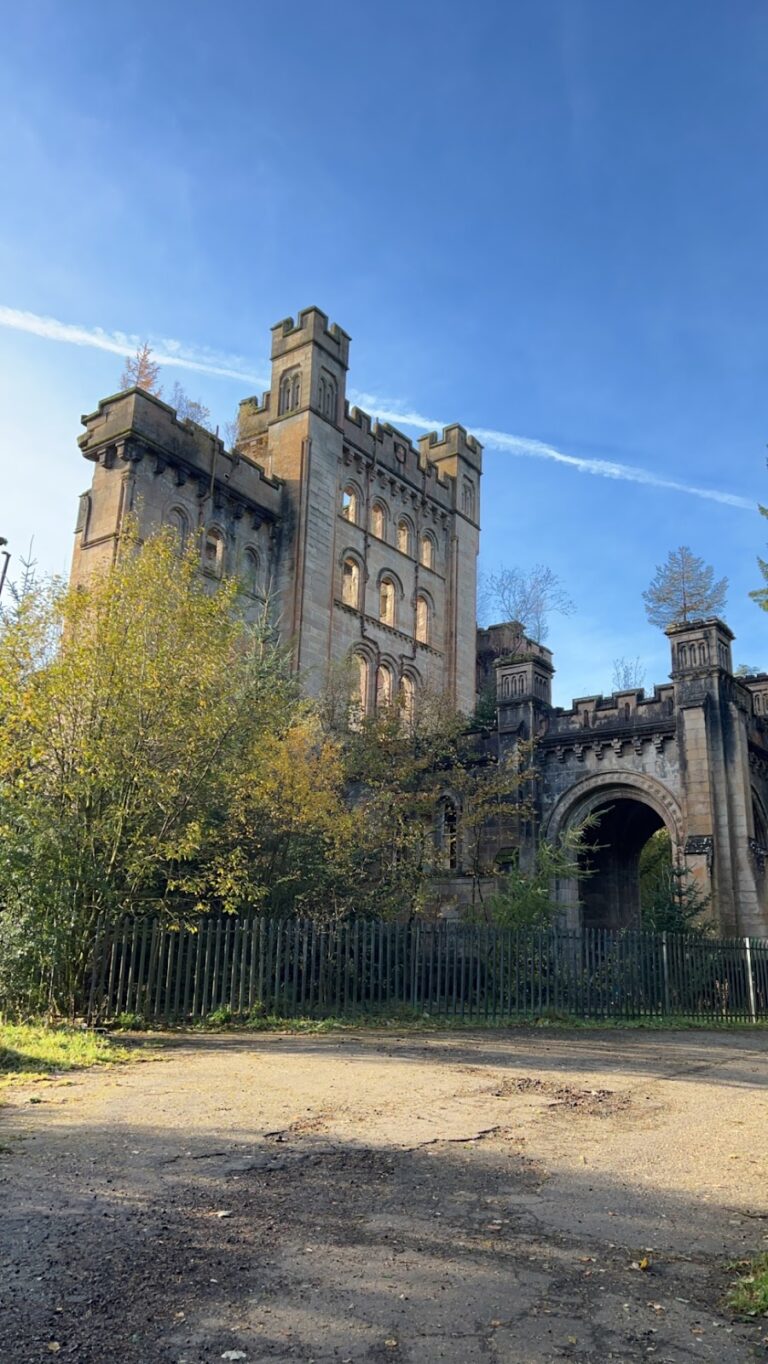Dumbarton Castle: A Historic Fortress on Dumbarton Rock, Scotland
Visitor Information
Google Rating: 4.5
Popularity: Medium
Google Maps: View on Google Maps
Official Website: www.historicenvironment.scot
Country: United Kingdom
Civilization: Medieval European
Remains: Military
History
Dumbarton Castle stands on Dumbarton Rock in the town of Dumbarton, located in West Dunbartonshire, Scotland. The rock is a volcanic plug formed around 330 to 340 million years ago during the Early Carboniferous period. The site’s strategic position overlooking the River Clyde made it important from at least the Iron Age, with evidence of early settlement and trade connections, including contact with the Romans.
The earliest written mention of the settlement dates to the late 5th century in a letter from Saint Patrick to King Ceretic of Alt Clut. From the 5th to the 9th century, the fortress was the center of the Brythonic Kingdom of Strathclyde, known as Alt Clut. Around AD 570, King Riderch Hael ruled from this stronghold. During this period, the castle was a key political and military site in the region.
Dumbarton Castle faced several sieges in the early medieval period. In 756, it was attacked by a combined force of Picts and Northumbrians. Later, in 871, a prolonged Viking siege led by Amlaíb Conung and Ímar lasted four months. The fortress fell after its water supply was cut off, resulting in the capture of many inhabitants, possibly including the ruling family. Following this destruction, the site disappears from records until the 13th century, as the kingdom’s capital shifted closer to the Clyde near Partick and Govan.
In medieval Scotland, Dumbarton Castle regained importance as a royal fortress. It was where William Wallace was taken after his capture. The castle also served as a refuge for King David II and Queen Joan of The Tower following their defeat at the Battle of Halidon Hill in 1333. During the 14th century, Malcolm Fleming of Fulwood governed the castle, protecting the royal family and earning the title Earl of Wigtown. After the Black Death severely reduced the garrison in 1361, his nephew took over as governor.
In 1425, the castle withstood a rebellion led by James the Fat, who burned the surrounding town but failed to seize the fortress. Sir John Colquhoun defended the castle successfully and was appointed governor until 1439. Later, in 1489, supporters of James III gathered at Dumbarton Castle before their defeat by James IV. The castle then became James IV’s naval base on the west coast and a staging point for his campaigns in the Western Isles. Between 1489 and 1505, James IV used the castle extensively, commissioning ships and hosting court events there.
In 1503, James IV granted Dumbarton Castle to his queen, Margaret Tudor. The castle continued as a royal stronghold into the early 16th century, maintaining its military and naval roles. It also housed a parish church and a college where royal religious services, such as Evensong, were held. The castle was notable for safeguarding important artifacts, including the sword of William Wallace, which was repaired there in 1505.
Remains
Dumbarton Castle occupies the summit of Dumbarton Rock, a volcanic plug rising about 240 feet (73 meters) above the surrounding land. This natural elevation provided a strong defensive position with commanding views over the town and the River Clyde. The rock’s hard basalt core resisted erosion, leaving a steep, compact site ideal for fortification.
The castle’s structures include fortifications designed to withstand repeated sieges from Pictish, Northumbrian, Viking, and later medieval forces. These defenses reflect continuous military use from the Iron Age through the medieval period. By the late 15th and early 16th centuries, the castle supported shipbuilding activities, using local timber to construct vessels, indicating the presence of shipyards or related facilities nearby.
Within the castle grounds, a parish kirk and a college existed by the early 1500s. These buildings hosted royal religious observances, such as Evensong, linking the site to ecclesiastical functions alongside its military role. The castle also safeguarded significant items like William Wallace’s sword, which was maintained there in 1505.
While detailed descriptions of the castle’s layout and specific architectural features are limited, its position atop the volcanic plug suggests a compact fortress adapted to the rock’s contours. The surviving remains reflect a site shaped by centuries of military, naval, and religious use, with natural defenses playing a key role in its endurance.
